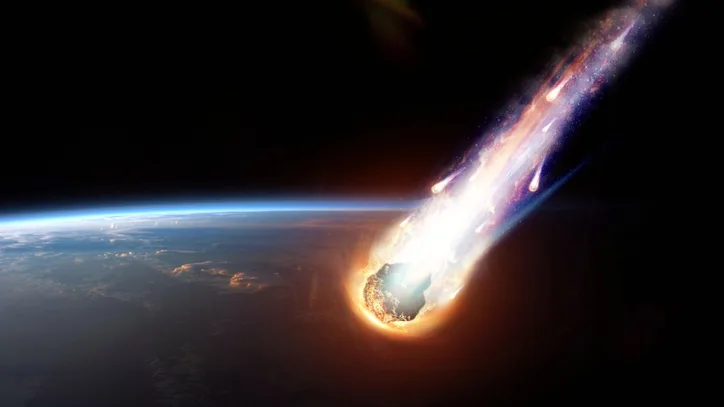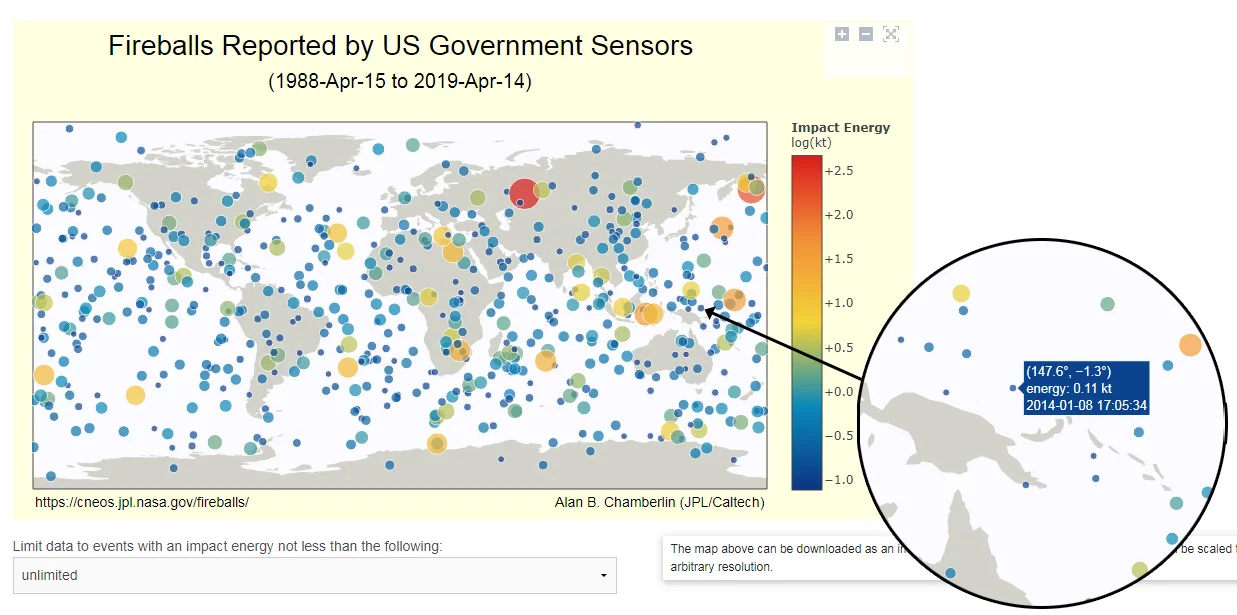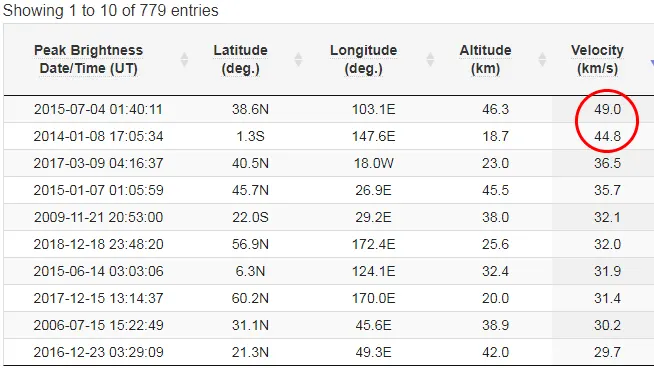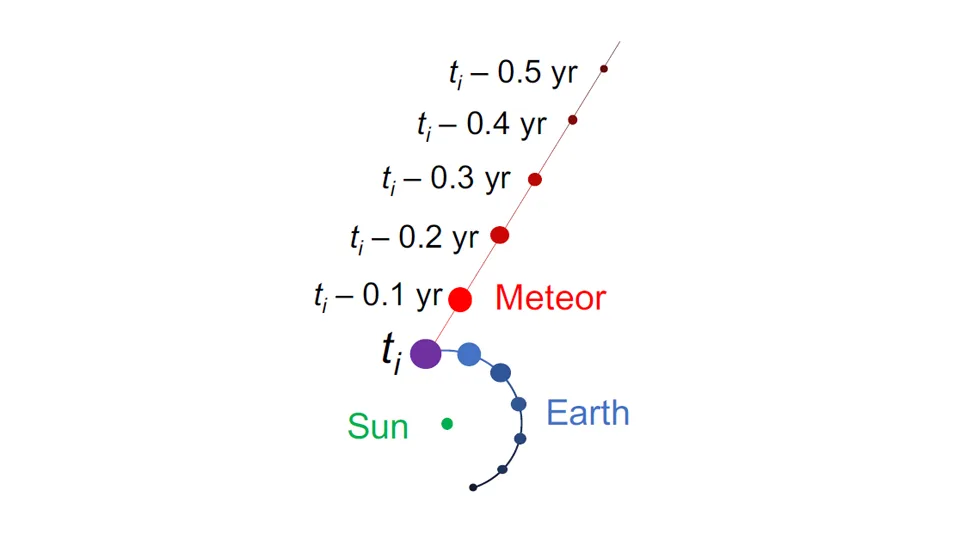
An alien meteoroid may have slammed into Earth back in 2014
Based on a new study, there could be alien chunks of rock resting on the bottom of the ocean off the Papua New Guinea coast.
When the asteroid now known as ’Oumuamua was detected in late 2017, astronomers identified it as the very first recorded interstellar visitor to our solar system. Based on a new study, though, it may actually have been the second one on record.
'Oumuamua made a fairly quiet entrance to our solar system, as it slipped in and sling-shotting around the Sun. It was spotted by telescopes after that, while it was on its way back out towards interstellar space.
According to a new paper from Harvard University astronomers Amir Siraj and Avi Loeb, however, the actual first recorded instellar visitor to our solar system made a much brighter entrance.
A meteor fireball flashed over the Bismarck Sea, to the northeast of Papua New Guinea, early in the morning of January 8, 2014, and was recorded by U.S. government sensors.

This map of all reported fireballs from April 1988 to April 2019 captured what could be the first recorded interstellar meteoroid strike on Earth. Credit: NASA Center for Near Earth Asteroid Studies/Alan B. Chamberlin/JPL-Caltech
The impact was mostly unremarkable, compared to the majority of strikes recorded on this map. Estimates of the meteoroid's size, based on the energy of its impact, put it at roughly a metre across, with a mass of just under 500 kg (if it was a typical stony meteoroid).
For comparison, though, the Bering Sea impact from December 2018 was at least 1,500 times more energetic, and the Chelyabinsk impact from February 2013 was 4,000 times more energetic.
If anyone saw it, it would have been very similar in intensity to the fireball that flashed over British Columbia on September 4, 2017, as seen in the all-sky camera video, below.
NOT BIG, BUT FAST
What truly set this fireball apart was just how fast it was going when it hit.
As it hit the top of the atmosphere, this meteoroid was clocked at around 45 kilometres per second, or 162,000 kilometres per hour. Of the 779 impacts detected between 1988 and 2019, that is the second fastest on record. The fastest on record occurred on July 4, 2015, over China's Gansu province, with a speed of 49 km/s.

Table of fireballs, sorted by velocity, shows the two fastest fireballs on record. Credit: NASA Center for Near Earth Asteroid Studies
Tracking both of these meteoroids back from their impacts, Siraj and Loeb discovered something remarkable.
The July 2015 Gansu fireball may have been the fastest, but only because Earth and the meteoroid hit each other in a head-on collision. Its speed relative to the Sun was, therefore, much slower, identifying it as just a typical denizen of our solar system (only one with a fairly remarkable trajectory when it got in Earth's way).
Focusing on the January 2014 Bismarck Sea fireball instead, their analysis found that this meteoroid actually caught up to Earth, from nearly behind the planet, at the time of impact. Thus, its Sun-relative speed, before it plunged into the atmosphere, was actually must faster than the fireball speed - up around 60 kilometres per second (216,000 km/h)!

The trajectory of the January 8, 2014 meteor (red), shown intersecting with that of Earth (blue) at the time of impact. Credit: Siraj, et al. (2019)
With a speed of 60 km/s, after 'falling' this deep into the Sun's gravity well, they found that it is highly unlikely that this object could be bound to the Sun. If it had missed Earth, it would have whipped around the Sun and been ejected from our solar system, just like 'Oumuamua (which was travelling at only around 50 km/s as it passed Earth's orbit).
As a result of their analysis, Siraj and Loeb said that the January 2014 meteoroid's high speed implies that it was likely ejected from the deep interior of some alien planetary system, or possibly from close in to a star, somewhere in the disk of our galaxy.
Finally, they recommend that meteor scientists analyze future impacts with high velocities, as there could be an interstellar meteoroid impacting with Earth once every 10 years or so!
It would be next to impossible to locate meteorite fragments from this impact, as they are very likely at the bottom of the ocean. Finding meteorites from an interstellar impact, though, could be one of the biggest scientific discoveries of our time.
Sources: arXiv.org | NASA CNEOS | AMS Meteors










